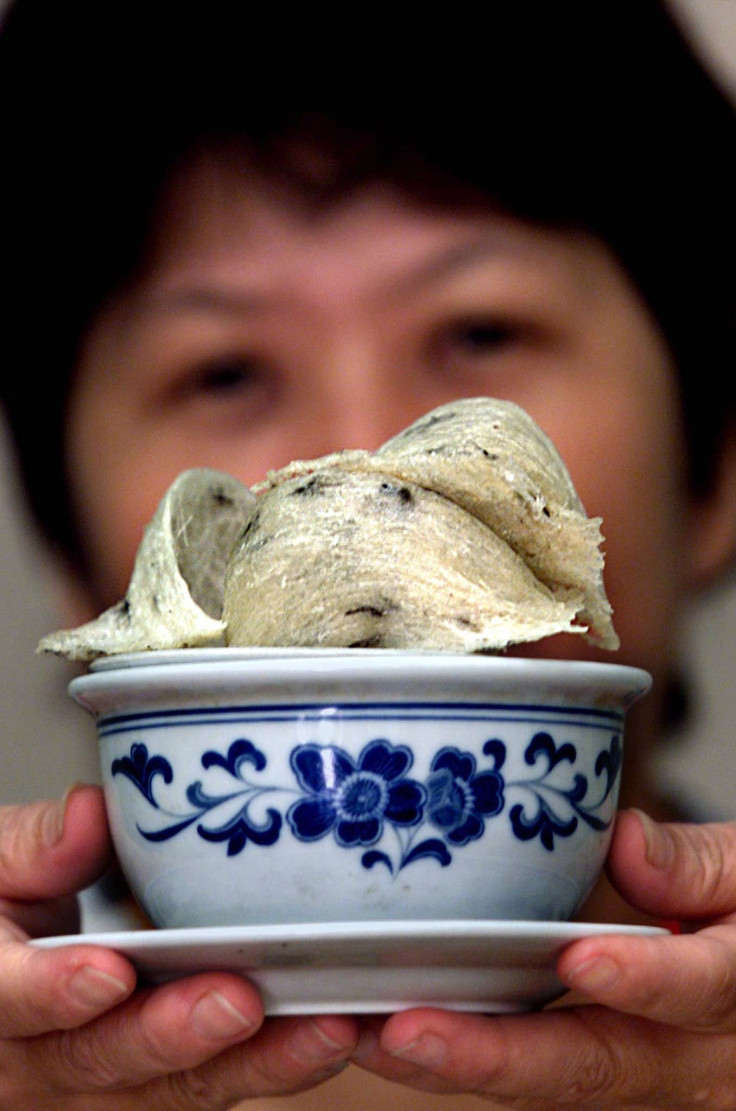Asia's Increasingly Wealthy Population Demands More Edible Bird's Nests And Vietnam Is Keen To Become A Major Producer Of The Delicacy

Edible bird’s nests, constructed of solidified saliva of swiftlets and supposedly high in nutrients, have been part of Chinese cuisine for hundreds of years, and until recently only a very few could afford the delicacy, which can cost up to $2,500 per kilogram (2.2 pounds).
But now emerging Asia’s appetite for expensive foods like bird’s nests is growing, and Vietnam is hoping to join Malaysia and Indonesia as a major producer of the delicacy.
The global market is estimated at as much as $5 billion per year and mainly caters to wealthy East Asian and American consumers, but traders are on the lookout for new markets such as the Gulf countries, according to Bloomberg. Edible nests, known as “caviar of the east,” sell for $1,000 to $1,500 per kilogram wholesale.
Currently, Indonesia supplies about 70 percent of the world’s edible nests, followed by Malaysia with 20 percent and Thailand. Vietnam is now trying to set up production zones for the delicacy through the country’s largest investment fund manager, VinaCapital Group Ltd.
Vietnam’s bird’s nests industry generates about $200 million in annual revenue, and is growing as much as 25 percent each year, industry experts said. In coastal city Phan Rang Tham Cham, officials are working to expand its bird’s nests industry to 2.8 million birds by 2020. The largest bird house now generates about $50,000 worth of bird’s nests per month.
The lucrative industry is not without risks, however. After an initial investment of $70,000 to $500,000 to build a bird house structure, and monthly costs of about $50, a successful operation can earn as much as $1 million annually, said Le Danh Hoang, founder of Ho Chi Minh City-based NutriNest, a bird’s nest retailer. However, there is no guarantee investing in a bird house will pay off, Hoang said. Many structures fail to attract birds, and if a disease hits a bird house, the investment could be lost.
“It’s a fairly high-risk industry,” Hoang said, according to Bloomberg.
Along with Vietnam’s boosted supply of bird’s nests, its demand is also growing. Bird’s nests have always been valued, but now more and more have the resources to eat the delicacy.
“It’s one of the most valuable products one can give to those who have everything,” said Mai Vu, 28, who works at an international bank in Hanoi and was shopping for bird’s nest for her toddler daughter at a new, upscale mall. “You want to impress people.”
Bird’s nests are most commonly consumed in bird’s nest soup, in traditional Chinese cuisine, but can also be used as an ingredient from congee to coffee and desserts. Ready-to-eat bird’s nest gel is also a popular commercial product. It is believe to provide a range of health benefits, such as aiding digestion, raising libido, improving the voice, alleviating asthma and benefiting the immune system overall.
“Chinese and Vietnamese are the top consumers of bird’s nest,” Loan, who is also chief executive officer of Yen Viet Joint Stock Co., a company capitalizing on the bird’s nest market, said in an e-mail, according to Bloomberg. “They have a very strong belief it can deliver a lot of health benefits, especially anti-aging and improvement to the immune system.”
As far as Asian delicasies go, bird's nest is at least less strange than human breast milk and definitely more humane than tiger penis and shark fins.
© Copyright IBTimes 2025. All rights reserved.




















